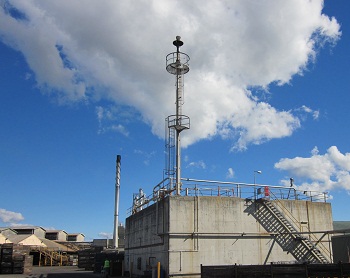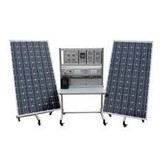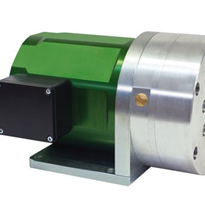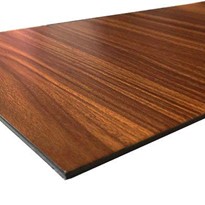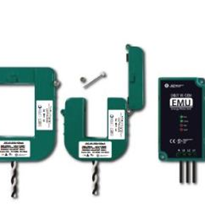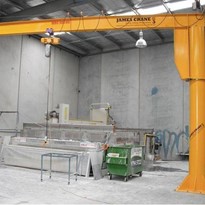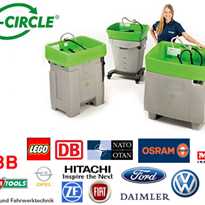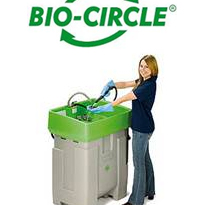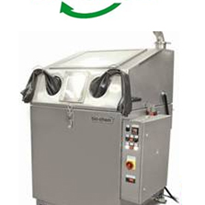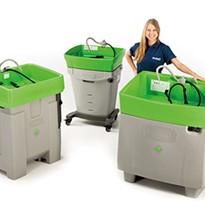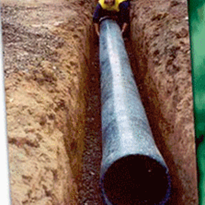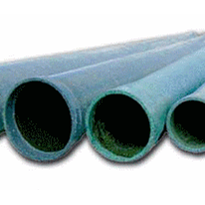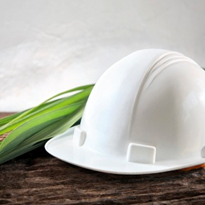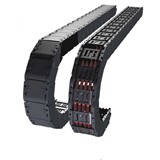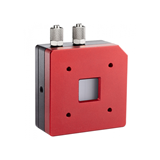"The existing boiler burns around 30 per cent of the biogas produced," Jason Carter, environmental manager at Northgate said. "The new boiler, when completed and running before the end of 2011, will utilise about 90 per cent of the generated biogas."
Golden Circle's wastewater plant - including a third digester utilising CST Wastewater Solutions' and GWE's high efficiency anaerobic technology to produce biogas – has already saved Golden Circle more than $2 million a year in effluent disposal since the plant was upgraded to cope with increasing production volumes.
The Golden Circle biogas utilisation project from anaerobic treatment of wastewater is applicable to a wide range of industries in food processing, and canning, beverage production, brewing and fermentation, agro processing and biofuels (vegetables, beet sugar, starch, palm oil), pulp and paper, and petrochemical production.
Golden Circle, owned by H J Heinz Co Australia, manufactures more than 400 products, including shelf-stable fruit and vegetables, fruit juices and cordials.
At its main processing operation at Northgate, a northern suburb of Brisbane, Golden Circle operates an Upflow Anaerobic Sludge Blanket (UASB) wastewater treatment plant. Wastewater fed into the UASB treatment plant is mainly from Golden Circle's fruit processing operations. Solid matter is first separated out as much as possible, leaving mostly dissolved fruit sugars.
Two digesters were installed in 1989, while a third digester from Global Water Engineering (GWE) was added in 1996 to cope with increasing production volumes at the plant.
"The UASB plant has reduced the concentration of fruit sugars in the effluent, saving us $2 million a year in discharge fees, although there is still some daily discharge to the Queensland Urban Utilities sewage treatment system," Carter said.
Biogas from the Northgate factory began to be utilised in the late 1990s to contribute to the steam needs of the operation, after previously being flared off. The biogas presently feeds a 3.5 MW boiler that produces about 5 tonnes of steam per hour, used for cooking foods, pasteurisation and sterilisation.
Biogas from the wastewater treatment plant doesn't supply all of the Northgate factory's steam needs, but supplements the steam produced by burning coal.
"At the moment, the burnt biogas is offsetting about 5 per cent of coal usage, while the new boiler will offset 15 per cent," Carter said.
"Coal was a cheap fuel for producing steam when we began treating our wastewater in the 1990s, so the need to supplement coal with biogas wasn't there. However energy prices are rising and the need to curb greenhouse emissions is growing. This means that our investment in a new boiler to utilise most of the biogas is now viable."
According to CST Wastewater Solutions, which supplied the GWE digester in 1996, the concept of using wastewater to create green energy is much more widely applicable than is often realised.
"Any factory with a biological waste stream or wastewater with high COD (Chemical Oxygen Demand) can easily use this model to generate energy," Michael Bambridge, managing director of CST Wastewater Solutions said.
"So far, most industries have been focusing on treating their effluent to meet local discharge standards. While this can contribute to reduced discharge fees, wastewater treatment installations have never been seen as significant revenue generators.
"However, by using anaerobic wastewater treatment to generate biogas, an entirely different light is shed on the cost structure of wastewater treatment infrastructure. It can now become a substantial additional source of income for many factories and processing plants, especially those involved in vegetable matter and other primary product processing."
The first benefit of anaerobically treating the organic effluent and waste material, is of course cleaner effluent.
"On average the removal efficiency of GWE's anaerobic wastewater treatment installations is as high as 90-95 per cent, easily bringing the organic load down to regulatory discharge standards for most types of wastewater.
"For the most heavily loaded wastewaters, extra post-treatment steps can further purify the effluent, meeting even the most stringent discharge regulations for water re-use.
"Besides cleaning the wastewater (which other processes can ultimately achieve), by far the greatest advantage of anaerobic wastewater treatment is the controlled, continuous production of valuable biogas.
"Other types of treatment, such as aerobic, do not provide this benefit."
Closed anaerobic reactors generate large quantities of methane (CH4) from the organic materials in the wastewater that can diminish or even completely replace the use of fossil fuels in the production process.
Industries with high organic loads can generate enough biogas to fully cover a factory's energy needs and still have a biogas surplus to feed it into power generators and sell electricity to the national grid.
Besides the economical advantage of anaerobic wastewater treatment, there is clearly also the environmental advantage, significantly reducing factories' carbon footprint. Closed anaerobic process systems prevent large quantities of CH4 being emitted into the atmosphere.
With CH4 being 21 times more harmful to the atmosphere than carbon dioxide, anaerobic wastewater solutions can qualify for Emission Reduction Certificates for projects in countries listed under the United Nations Kyoto Clean Development Mechanism (CDM) and Joint Implementation (JI) programs.
Can I apply it to my factory?
Anaerobic wastewater treatment with biogas recovery is possible for a very wide range of industries. The main criteria for energy-generating projects to become viable is the COD loading rate. The higher the organic load of the wastewater, the more biogas and thus renewable energy can be generated from it.
Cost of fuel also plays a significant role. As the world is learning to live with higher energy prices, choosing anaerobic technology now holds the key to immediate and future safeguarding of power supply for many industries.
Typical industries amongst GWE's proven references that are very suitable for anaerobic wastewater treatment are: food processing and canning (fruits, vegetables, meat, fish, seafood); abattoirs; snacks, confectionary, dairy; beer and beverages (beer, soft drinks, tea, coffee- and milk-based drinks, fruit juices); fermentation industry (alcohol, yeast, monosodium glutamate etc); biofuels (ethanol, biodiesel); pulp and paper; agro and agro-processing industries (vegetables, beet sugar, starch, palm oil); and petrochemical (PTA, PET, glycol and polyester factories).
Choosing the right technology
In selecting a suitable technology provider for wastewater treatment with biogas utilisation, it is crucial to partner with a reliable, experienced team, such as GWE/CSTWastewater Solutions, which provide a solid track record in this field complemented by more than 20 years of hands-on local wastewater experience.
With more than 30 years of experience, GWE has built up a unique range of seven anaerobic reactor types, each specifically designed for dedicated organic loads and specific wastewater types, which is unique in the market.
GWE is therefore very proud of its impeccable track record of meeting and regularly exceeding its performance guarantees. It is GWE's mission to be an ambassador for anaerobic wastewater treatment and to gain credibility for the technology by delivering quality installations that meet their performance guarantees.
GWE has more than 200 plants worldwide, with clients including Coca-Cola, Pepsi, Carlsberg, Heineken, SAB Miller and Lion Nathan.
CST Wastewater Solutions is one of Australasia's leading wastewater solution groups. The company has provided a broad range of quality cost-effective solutions for 25 years, formerly as Contra-Shear Technology and now as CST Wastewater Solutions to reflect its expanded scope operating from its new combined office and warehouse in Roseville.


